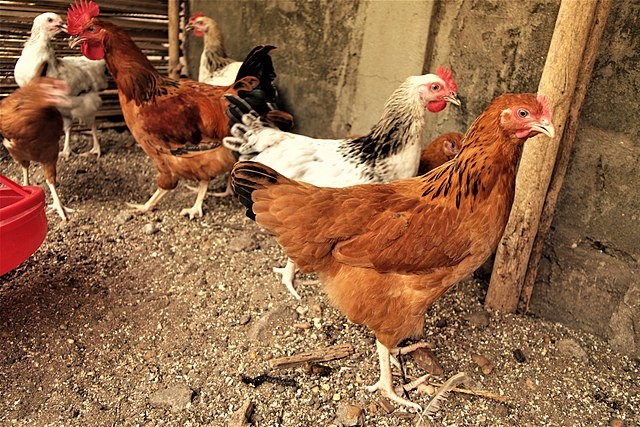
(Photo : Wikimedia Commons/Adoscam)
The World Health Organization (WHO) gave an update about the spread of H5N1 bird flu to new species, including humans. The latter reportedly faces an "extraordinarily high" mortality rate, so the public should take caution.
H5N1 Bird Flu Spread to Humans
Tens of millions of chickens have died as a result of the current bird flu outbreak, which started in 2020. The virus has also infected terrestrial and marine mammals and wild birds. Experts were surprised to see cows and goats on the list last month, as they were not previously believed to be susceptible to this particular strain of influenza.
Chief scientist Jeremy Farrar of the UN health agency claims that the A (H5N1) strain has turned into "a global zoonotic animal pandemic." He added that the biggest worry is that the virus, originally limited to infecting chickens and ducks, is now evolving to infect humans and, more importantly, can spread from human to human.
There is currently no proof that the influenza A(H5N1) virus is contagious among people. However, "the mortality rate is extraordinarily high" in the hundreds of cases where humans have contracted the disease through interaction with animals, according to Farrar.
Between 2003 and April 1 of this year, it registered 889 human cases in 23 countries, resulting in 463 deaths or 52% of cases fatalities. US officials reported earlier this month that a person in Texas was recuperating from bird flu following exposure to dairy cattle, which is a concerning development.
It happened after the virus infected cattle reportedly exposed to wild birds in Texas, Kansas, and other states. This was only the second instance of a human testing positive for bird flu in the nation.
According to WHO, it also seems to have been the first instance of the influenza A(H5N1) virus strain infecting humans through contact with an infected mammal.
When "you come into the mammalian population, then you're getting closer to humans," Farrar said, warning that "this virus is just looking for new, novel hosts."
"It's a real concern," he added.
Farrar called for stepping monitoring. He insisted that it was very important to understand the rate of human infections because that's where adaptation of the virus will happen.
"It's a tragic thing to say, but if I get infected with H5N1 and I die, that's the end of it. If I go around the community and I spread it to somebody else, then you start the cycle," he added.
The development of H5N1 vaccines and treatments was underway, with an emphasis on the necessity of guaranteeing that national and regional health authorities worldwide possess the ability to identify the virus. According to Farrar, this was being done so that in the unlikely event that H5N1 spread from person to person, everyone would be ready to act quickly.
ALSO READ: Bird Flu To Blame for Egg Shortage, Price Hike; Avian Influenza Shows No Signs of Slowing Down
Human-To-Human Bird Flu Infection Debunked
Last year, an 11-year-old girl passed away due to bird flu. Two days later, her father also tested positive. The incident prompted the WHO to voice concerns about possible human-to-human transmission.
The illness is not easily contagious and does not move from person to person. But avian influenza had already struck several of them.
According to an announcement from Cambodia's Communicable Disease Control Department (CDC), the 49-year-old father had shown no symptoms and recovered. He was eventually discharged from the hospital.
The CDC continued by saying that their research revealed that there was no mutual transmission between the father and daughter and that they had caught the virus from local birds. Again, bird flu seldom affects humans, and when it does, it usually spreads through close contact with infected birds.
RELATED ARTICLE: Burkina Faso Bird Flu Outbreak: 500,000 Chickens Die Due to H1N1 Strain
Check out more news and information on Bird Flu in Science Times.














